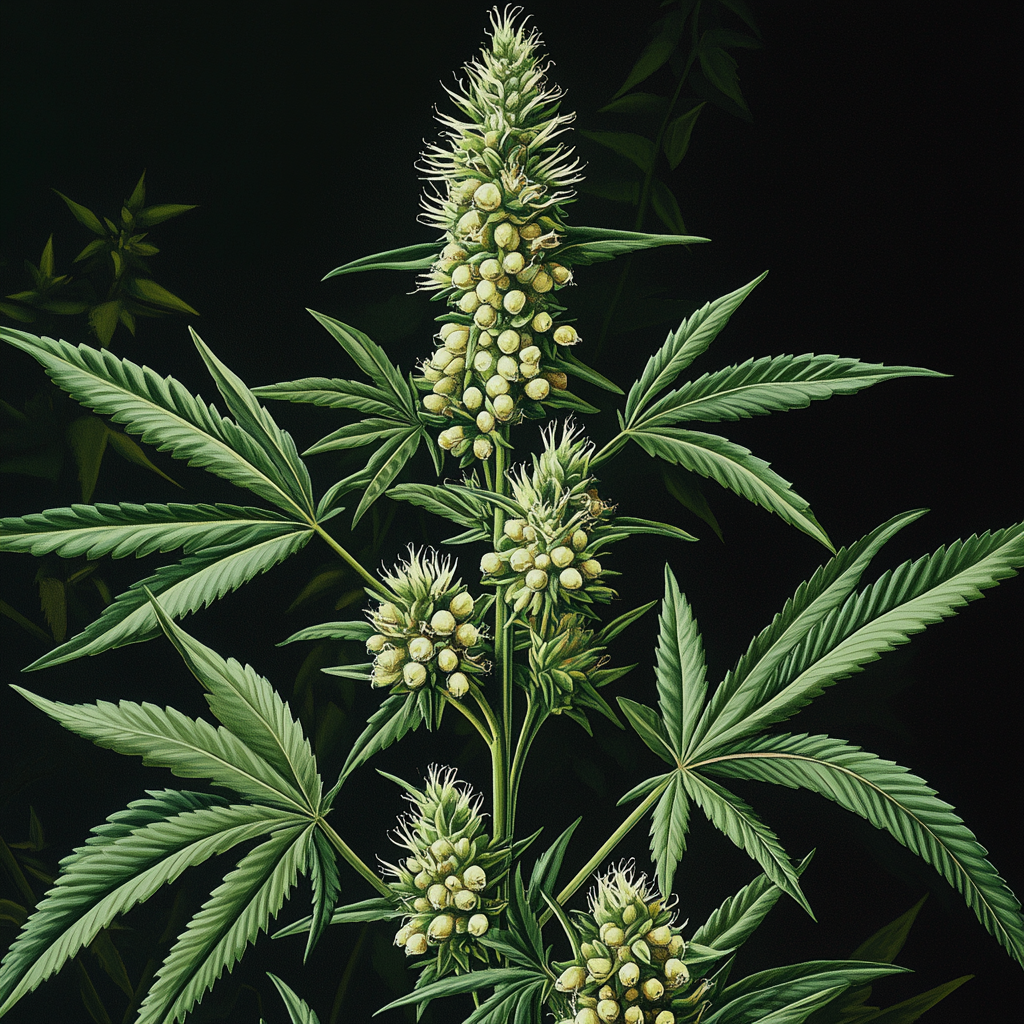Identify Male vs. Female Pot Plants: A Quick Guide
Growing cannabis plants can be a rewarding endeavor for both recreational and therapeutic users. However, understanding the differences between male and female pot plants is crucial for anyone looking to maximize yield and potency. Female plants produce the coveted flowers rich in cannabinoids, while male plants are typically less desirable unless you’re breeding. Here’s a guide to help you identify male vs. female pot plants with ease.
Why Identifying Sex Matters
The identification of male and female plants is essential for several reasons.
Female plants produce the lush buds desired for their high cannabinoid content. By removing male plants, you maximize the number of females, thereby boosting your overall yield.
If males are left in the garden, they will release pollen and fertilize the female plants. This results in seed production, which diminishes the quality and potency of the buds.
For those who are into breeding, identifying the sex of the plants allows for controlled pollination, thereby creating new and improved strains.
How to Identify Male Pot Plants
Male cannabis plants have distinct characteristics that set them apart from their female counterparts. These come into play especially during the pre-flowering stage.
Visual Indicators
Male plants develop pollen sacs that look like clusters of tiny balls. These sacs usually appear at the junctions where branches meet the main stem and start appearing early in the flowering stage, around 3-4 weeks into the growth cycle.
Males tend to grow taller and faster than females. This can be observed during the vegetative stage itself and becomes more pronounced in the pre-flowering stage.
Male plants have fewer leaves and a lighter, airier structure, in contrast to the denser foliage of female plants.
How to Identify Female Pot Plants
Female cannabis plants carry the desirable traits that most growers aim for. Here are some ways to pinpoint female plants among your crop.
Visual Indicators
The easiest way to identify a female plant is by looking for thin, hair-like structures called pistils. They usually emerge at the node areas and are often white, yellow, or orange in color.
Female plants develop pre-flowers that look like tiny calyxes. Pre-flowers typically appear at the nodes and bear pistils.
Female plants are usually shorter and bushier than males. They have a more compact structure which allows them to support the weight of the buds.
Differences During Flowering
Understanding how male and female plants further differentiate during the flowering phase can also be vital.
Male Plants
–
: The pollen sacs swell and eventually burst, releasing pollen into the air.
–
: Males generally have a less potent aroma compared to females.
Female Plants
–
: The plant focuses its energy on bud production. The pistils become more prominent, and the sticky trichomes that produce cannabinoids become visible.
–
: The scent becomes more pronounced, especially as the plant matures.
When to Sex Your Plants
Knowing the right time to identify the sex of your plants is crucial.
The best time to identify the gender of your cannabis plant is during the pre-flowering stage, which occurs around 4-6 weeks into the growth cycle. At this stage, both male and female plants start showing their reproductive organs, making differentiation easier.
If you missed identifying the plants during the pre-flowering stage, the flowering stage is your next best opportunity. By this time, the indicators are more pronounced but remember to act quickly to remove males and prevent pollination.
Hermaphrodite Plants: What to Watch Out For
Besides male and female plants, there’s also a possibility of dealing with hermaphrodites. These plants exhibit both male and female reproductive organs and can self-pollinate.
Identifying Hermaphrodites
–
: Hermaphrodites can be easily identified as they exhibit both pollen sacs and pistils.
–
: Stress conditions like poor light cycles, temperature extremes, or physical damage can cause a female plant to become a hermaphrodite.
Managing Hermaphrodites
To avoid potential issues, it’s best to remove hermaphrodites from your garden. They can fertilize themselves and other female plants, reducing the quality of your yield.
Conclusion
Successfully identifying and differentiating male from female pot plants is integral for any cannabis grower aiming for high-quality yields. Through visual identification techniques and understanding the distinct growth patterns, you can easily separate male plants from your crop early on. Remember, identifying the gender of your plants during the pre-flowering stage offers the ideal balance between early detection and accurate identification. By keeping male and hermaphrodite plants in check, you ensure the female plants fully develop their potent buds, allowing for the best possible harvest. Happy growing!





